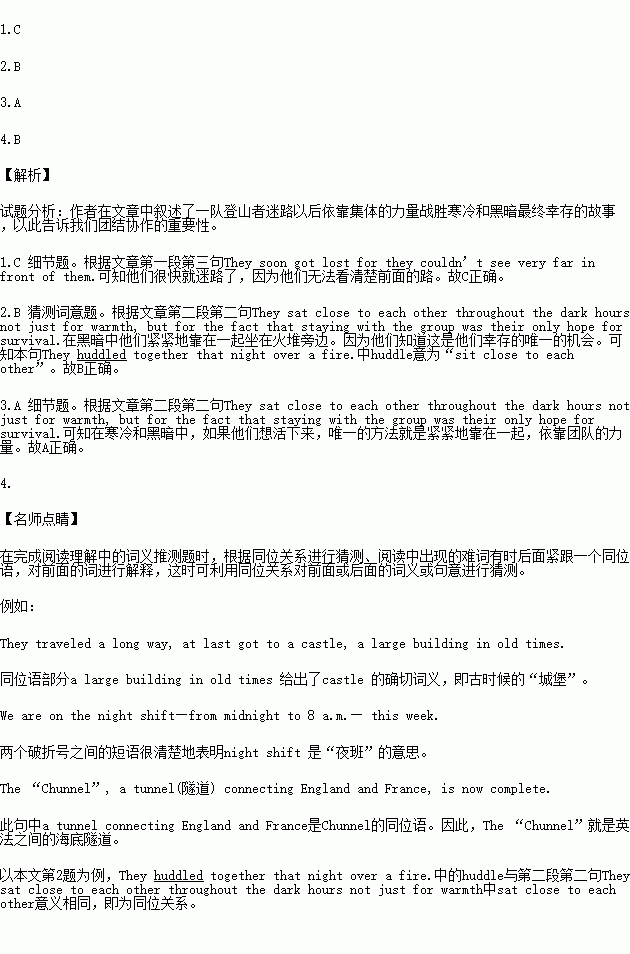题目内容
A group of people decided to climb a mountain together. They thought it was going to be an easy climb, so they laughed and talked among themselves and didn’t notice the sky growing darker. They soon got lost for they couldn’t see very far in front of them. They huddled together that night over a fire.
No one walked too far away from the group by themselves because it would surely lead to death. They sat close to each other throughout the dark hours not just for warmth, but for the fact that staying with the group was their only hope for survival. After what felt like a century, the sun started its slow climb up the sky. They were now able to see as far ahead of them as they liked, so they began to go down the mountain.
They still remained as a group at this time even though there was no real need. A bond (凝聚力) had formed throughout the group that could not be broken or ignored. They knew each other just as well as they knew themselves. As they reached the place where they had started their journey, they knew it was time to say goodbye. Feeling at peace, they bowed (鞠躬) deeply to each other. All of them kept the love they created as a group close to their hearts as they made their way out into the world alone.
1.What was the difficulty the group of people met in the mountain?
A. Damaged roads. B. Animals’ attack.
C. Losing their way. D. Running out of food.
2.What does the underlined word “huddled” in the first paragraph probably mean?
A. Talked a lot. B. Sat close to each other.
C. Played happily. D. Explored the mountain.
3.What was the most important thing they did in order to survive?
A. They kept close to each other.
B. They told stories to encourage others.
C. They made a fire to keep warm.
D. They sent some people to find the way.
4.They remained as a group when going down the mountain because ______.
A. the way was still not clear
B. they enjoyed being in a group
C. they needed others to pull them
D. the way became difficult to walk on
 阅读快车系列答案
阅读快车系列答案
